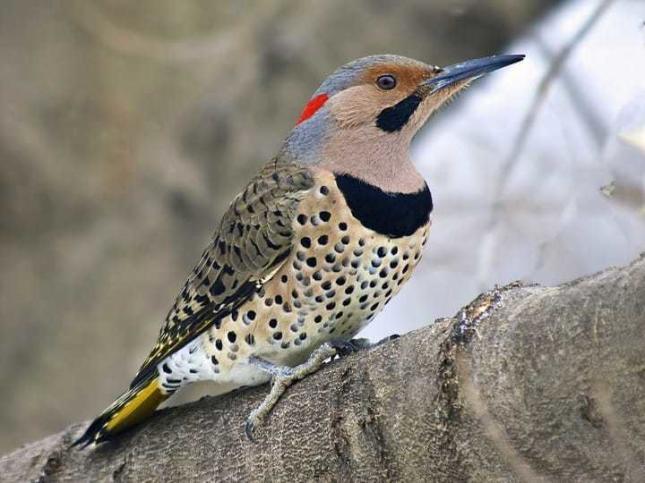
Northern Flicker: Fun Facts
- Northern Flickers are large, brown woodpeckers with a gentle expression and handsome black-scalloped plumage.
- Although it can climb up the trunks of trees and hammer on wood like other woodpeckers, on walks, don’t be surprised if you scare one up from the ground. It’s not where you’d expect to find a woodpecker, but flickers eat mainly ants and beetles, digging for them with their unusual, slightly curved bill.
- When they fly you’ll see a flash of color in the wings – yellow if you’re in the East, red if you’re in the West – and a bright white flash on the rump.
- Northern Flickers don’t habitually visit bird feeders, but you can find them in backyards and at bird baths. If your backyard has a mixture of trees and open ground, or if it’s near woods, you may find Northern Flickers simply by walking around the wooded edges.
- Northern Flickers eat mainly insects, especially ants and beetles that they gather from the ground. They also eat fruits and seeds, especially in winter. Flickers often go after ants underground (where the nutritious larvae live), hammering at the soil the way other woodpeckers drill into wood.
- The red-shafted and yellow-shafted forms of the Northern Flicker formerly were considered different species.
- The Northern Flicker is one of the few North American woodpeckers that is strongly migratory. Flickers in the northern parts of their range move south for the winter, although a few individuals often stay rather far north.
- Northern Flickers generally nest in holes in trees like other woodpeckers. Occasionally, they’ve been found nesting in old, earthen burrows vacated by Belted Kingfishers or Bank Swallows.
- Like most woodpeckers, Northern Flickers drum on objects as a form of communication and territory defense. In such cases, the object is to make as loud a noise as possible, and that’s why woodpeckers sometimes drum on metal objects. One Northern Flicker in Wyoming could be heard drumming on an abandoned tractor from a half-mile away.
- The oldest known yellow-shafted form of the Northern Flicker was a male and was at least 9 years, 2 months old when he was found in Florida.

